
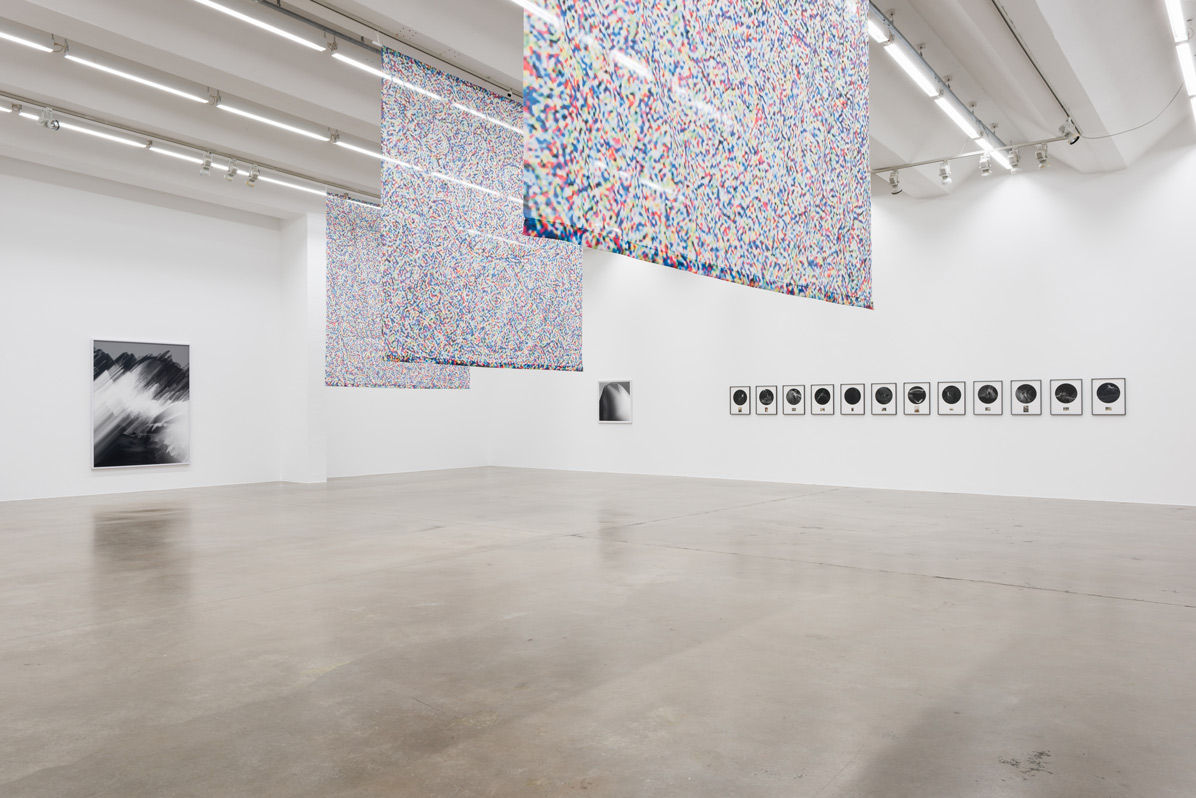
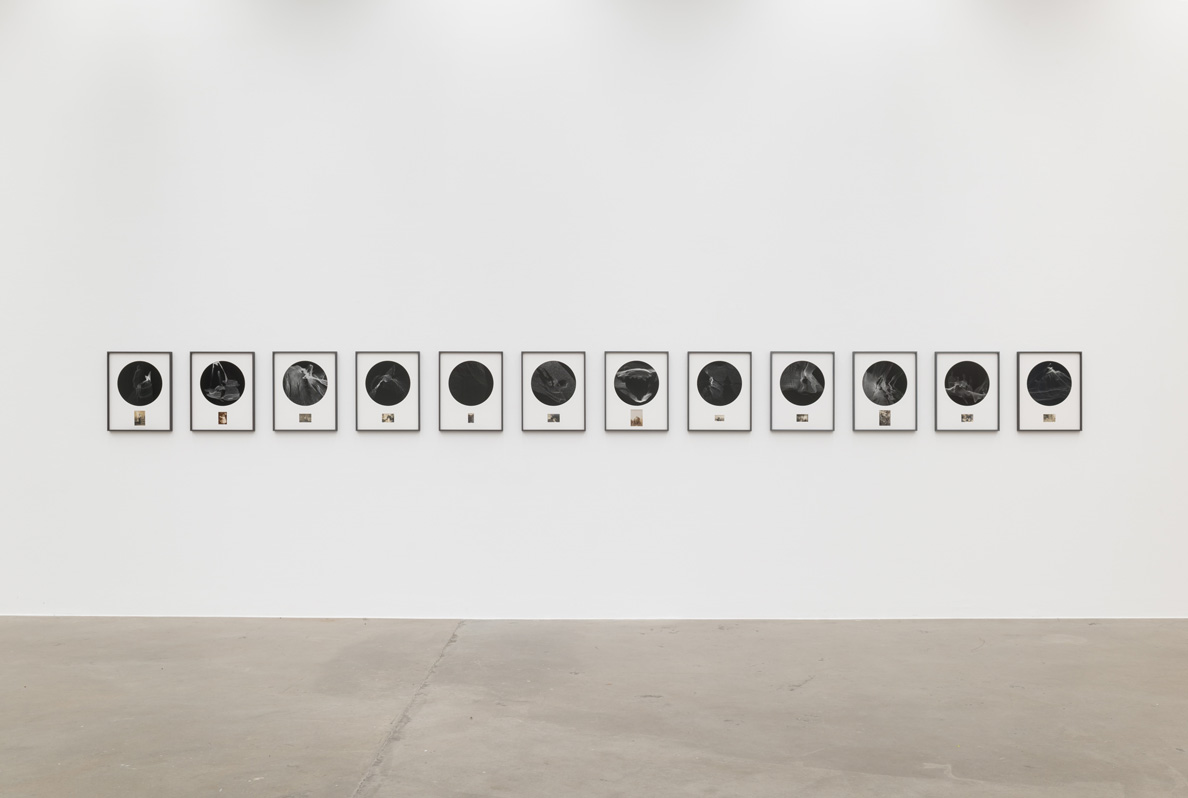
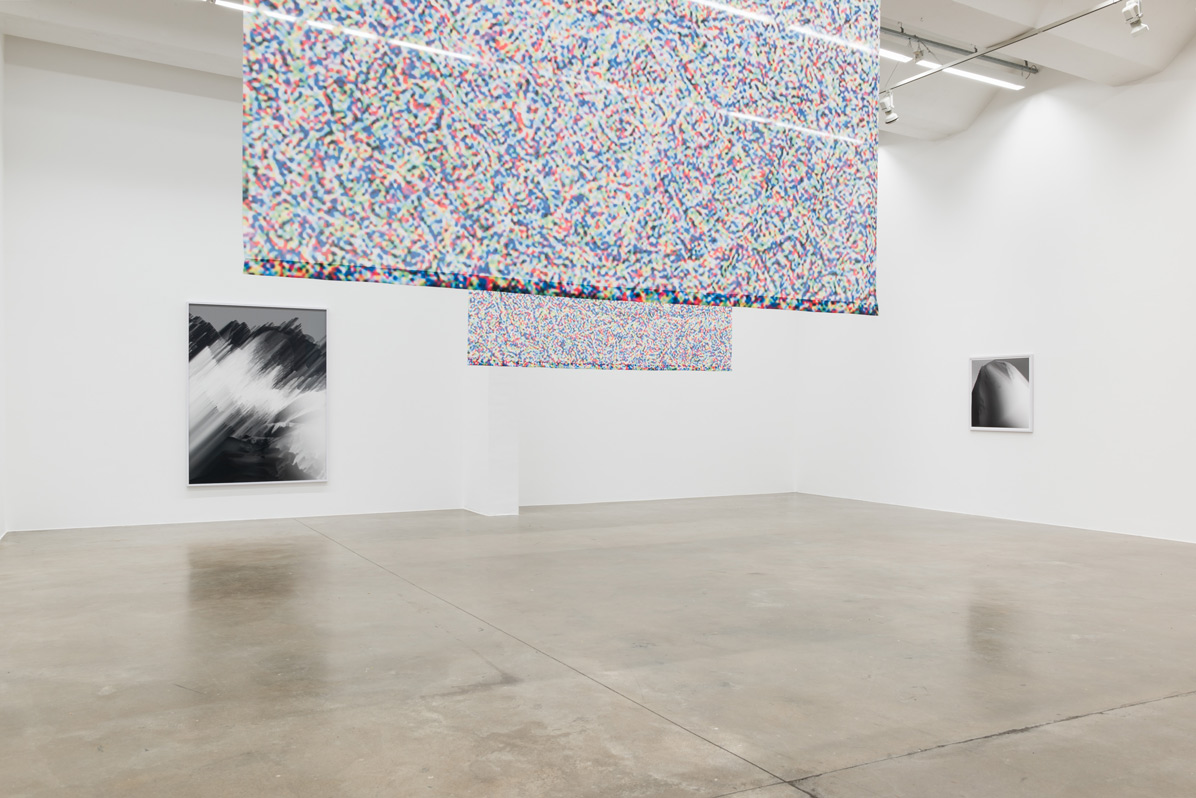
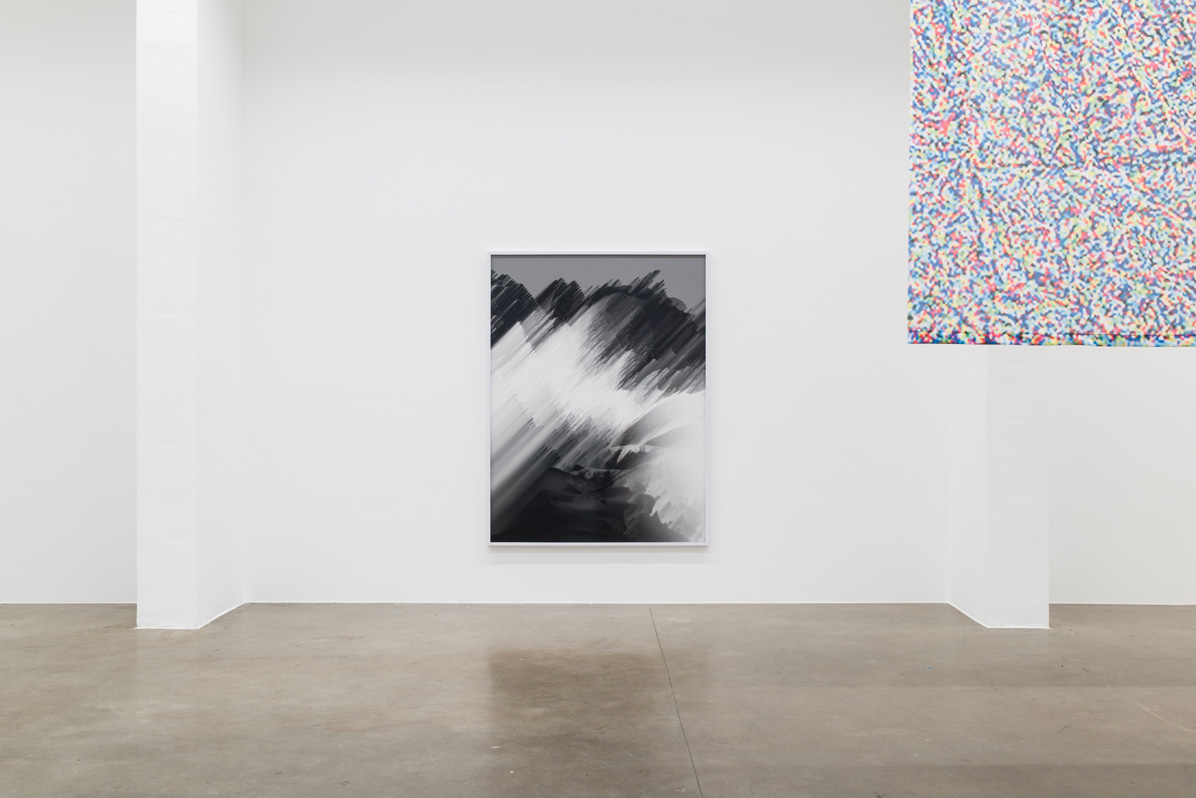
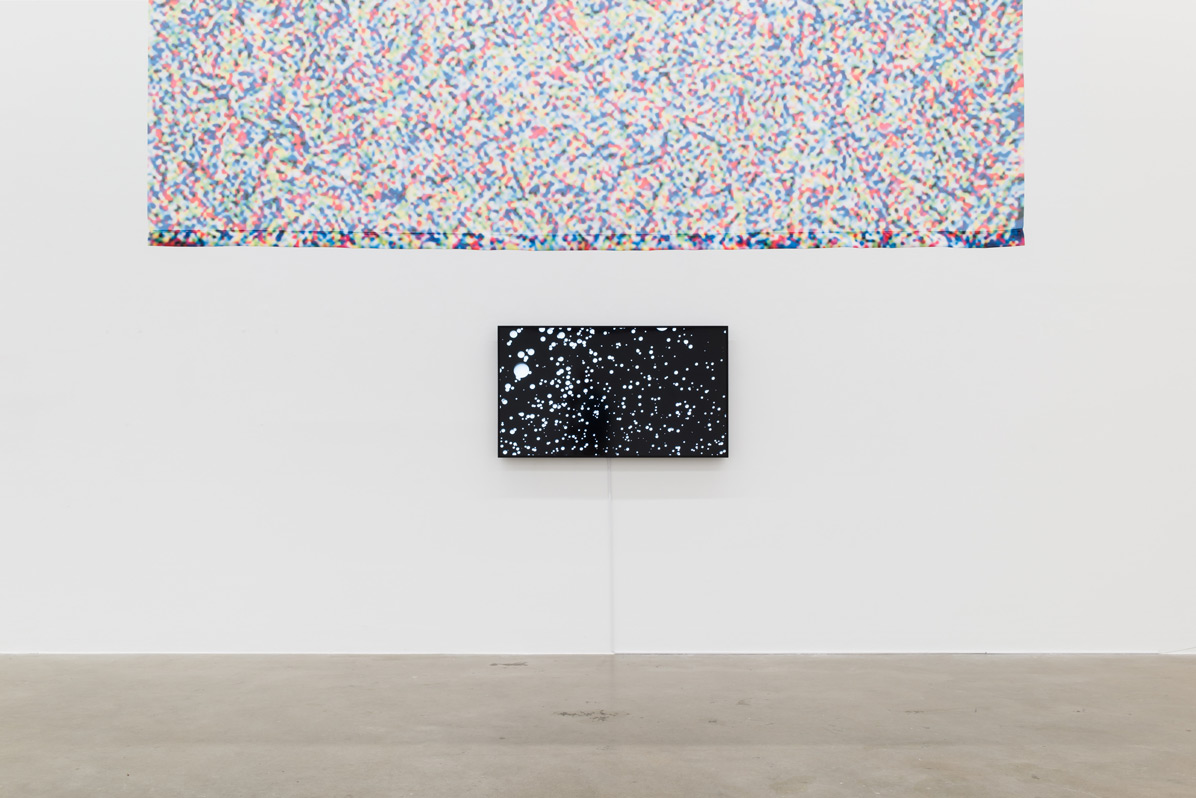

(english version below)
We measure the Distance
Nukleus der Ausstellung We measure the Distance von Ornella Fieres ist ein Fotoalbum aus dem 19. Jahrhundert. Es zeigt eine französische Familie, die nach Brasilien ausgewandert ist. Die Fotografien öffnen den Blick in die Vergangenheit – schwarz-weiße Momentaufnahmen, festgehalten zur Erinnerung.
Das Album ist in braunes Leder gebunden, auf dem Einband goldgeprägte Initialen. Wir blättern darin. Wir vertiefen uns in die Vergangenheit. Wir? – Nein! Eine künstliche Intelligenz.
Seit über zehn Jahren arbeitet die Künstlerin mit Maschinen, Rechnern, Algorithmen und künstlicher Intelligenz. Fieres beauftragte eine KI, die Fotografien anzusehen und zu interpretieren. Seit Jahren erforscht sie, wie künstliche Intelligenz Bilder der Vergangenheit wahrnimmt. Dabei vergleicht sie die Wahrnehmung von Mensch und Maschine und untersucht deren Wechselspiel. Manchmal manipuliert Fieres die Wahrnehmung der KI, manchmal lässt sie sich auf deren Sichtweise ein und erweitert damit ihre eigene. Gemeinsam mit der KI taucht Fieres in Momente der Vergangenheit ein: Spurensuche und Erinnerungsarbeit im virtuellen Coworking Space.
Die Ausstellung zeigt vier Werkgruppen:
The Essence of a Moment / Depth Estimation zeigt jeweils einen kleinen Originalabzug – ein kleines Mädchen mit Plüschtier oder eine Frau auf einem Berggipfel – und darüber ein größeres, rundes schwarzes Bild mit einem Muster aus unzähligen weißen Punkten. Das erinnert an den Blick durch das runde Fenster einer Raumstation in die Tiefe des Alls. Und tatsächlich handelt es sich dabei um eine Vermessung des Raums – nicht des Kosmos, sondern des Raums innerhalb der historischen Fotografie.
Fieres beauftragte die KI, die Tiefe und Räumlichkeit der alten Aufnahmen sichtbar zu machen. Dazu berechnet die KI aus der zweidimensionalen Fotografie sogenannte Punktwolken, die anschließend in einem schwarzen Raum visualisiert werden. Fieres kann diese Punktwolken am Computer in alle Richtungen drehen und das Geschehen aus verschiedenen Blickwinkeln betrachten – fast, als würde sie sich um die Erinnerung selbst herumbewegen. Die Bilder zeigen jeweils eine der möglichen Perspektiven.
The Essence of a Moment / Depth Estimation ist ein Blick in die Blackbox maschineller Wahrnehmung. Zwei Perspektiven begegnen sich: die menschliche Erinnerung und die algorithmische Analyse. Dieselbe Situation, gesehen aus verschiedenen Richtungen und mit unterschiedlicher Wahrnehmung – ein kleines Mädchen mit einem Plüschtier.
Inverse Depth Estimation zeigt zwei abstrakte Schwarz-Weiß-Arbeiten mit nahezu malerischer Anmutung. Ausgangspunkt sind die aus den historischen Fotografien gewonnenen Punktwolken. Fieres löscht gezielt einzelne Punkte aus den Datensätzen, sodass die räumliche Darstellung fragmentiert wird. Der Datensatz wird unvollständig, die Topografie unsicher, die „Erinnerung“ lückenhaft. Wie der Mensch füllt auch die Maschine – bei der Rückrechnung der Wolken in ein Bild – die Leerstellen des Vergessens. Der maschinelle Blick wird unsicherer, spekulativer, poetischer. Die Bilder entfalten eine zarte Schönheit und wirken beinahe traumhaft.
Adversarial Attack befasst sich mit der gezielten Verfälschung von Bildern durch künstliche Intelligenz. Man kann mithilfe einer KI die Bilderkennung einer anderen KI stören, indem man Pixelveränderungen einbaut oder auch fremde Motive in die Bilder implementiert. Diese Irreführung einer KI bezeichnet man als „Adversarial Attack“.
Ausgangspunkt für die Arbeiten waren die Porträts aus dem Familienalbum. Fieres beauftragte eine KI, Bilder von in Brasilien heimischen Tieren in die menschlichen Porträts zu implementieren – einen Kolibri, einen Jaguar und einen Baumfrosch. Während eine KI zur Bilderkennung durch solche Manipulationen leicht in die Irre geführt würde, bemerken Menschen diese Störungen kaum. In den Arbeiten von Adversarial Attack hat Fieres die Eingriffe jedoch so verstärkt, dass das ursprüngliche Motiv auch für Menschen kaum noch sichtbar ist. Weder Mensch noch Maschine erkennen das ursprüngliche Bildmotiv. Was bleibt, ist das Rauschen der Manipulation. Diesem Rauschen liegen jedoch weiterhin die Porträts zugrunde. Auf große Fahnen gedruckt, hängen die manipulierten Porträts an der Decke. Fast scheint es, als schwebten die Menschen der Vergangenheit geisterhaft im Raum.
We archive the Change ist ein Video, das einen mit einem 3-D-Programm generierten Flug durch die Punktwolken zeigt – jede Punktwolke die Tiefenmessung einer historischen Aufnahme. Wir sehen quasi einen Flug durch das Fotoalbum. Eine KI-generierte Stimme beschreibt zu jeder Punktwolke, was eine KI auf dem historischen Foto gesehen hat, und vermerkt ihre menschlich anmutende Reaktion darauf. Es klingt zurückhaltend, aber ist irritierend, denn die KI spricht in der ersten Person Plural: We measure the distance. We listen. We study the stillness. Es klingt, als schließe die KI uns in ihr „wir“ ein, als sei sie selbst ein Mensch.
Das Video We archive the Change fasst die Ausstellung zusammen und ist ein poetisches Archiv künstlicher Wahrnehmung, Dokumentation und Dichtung zugleich: We decode the gesture. We feel the weight. We measure the Distance.
We measure the Distance
The nucleus of Ornella Fieres’s exhibition We measure the Distance is a photo album from the 19th century. It shows a French family who emigrated to Brazil. The photographs open a view into the past – black-and-white snapshots, preserved as memories.
The album is bound in brown leather, the cover embossed with golden initials. We leaf through it. We immerse ourselves in the past. We? – No! An artificial intelligence.
For over ten years, the artist has worked with machines, computers, algorithms, and artificial intelligence. Fieres instructed an AI to look at the photographs and interpret them. For years she has been exploring how artificial intelligence perceives images of the past. In doing so, she compares human and machine perception and examines their interaction. Sometimes Fieres manipulates the AI’s perception; sometimes she adopts its perspective and expands her own. Together with the AI, Fieres dives into moments of the past: a search for traces and a work of remembrance in a virtual coworking space.
The exhibition presents four groups of works:
The Essence of a Moment / Depth Estimation features a small original print – such as a little girl with a plush toy or a woman on a mountain peak – and above it a larger, round black image with a pattern of innumerable white dots. It recalls the view through the round window of a space station into the depths of the cosmos. And indeed, it is a measurement of space – not outer space, but the space within the historical photograph.
Fieres instructed the AI to make the depth and spatiality of the old images visible. To do this, the AI calculates so-called point clouds from the two-dimensional photographs, which are then visualized in a black space. Fieres can rotate these point clouds in all directions on the computer and view the scene from various angles – almost as if she were moving around the memory itself. Each image shows one of the possible perspectives.
The Essence of a Moment / Depth Estimation offers a view into the black box of machine perception. Two perspectives meet: human memory and algorithmic analysis. The same situation, seen from different directions and with different perceptual logics – a little girl with a plush toy.
Inverse Depth Estimation presents two abstract black-and-white works with an almost painterly quality. Their starting point is the point clouds generated from the historical photographs. Fieres deletes specific points from the datasets, causing the spatial representation to fragment. The dataset becomes incomplete, the topography uncertain, the “memory” full of gaps. Like humans, the machine fills the voids of forgetting – when it recalculates the cloud back into an image. The machine’s gaze becomes more uncertain, more speculative, more poetic. The images unfold a delicate beauty and appear almost dreamlike.
Adversarial Attack deals with the deliberate manipulation of images through artificial intelligence. Using one AI, it is possible to disrupt the image recognition of another by altering pixels or inserting foreign motifs into the images. Such deception of one AI by another is called an “adversarial attack.”
The starting point for these works was the set of portraits from the family album. Fieres instructed an AI to insert images of animals native to Brazil into the human portraits – a hummingbird, a jaguar, and a tree frog. While such manipulations can easily mislead an AI, humans barely notice them. In Adversarial Attack, however, Fieres has intensified these interventions to such an extent that the original motif becomes almost impossible for humans to discern. Neither humans nor machines recognize the original image. What remains is the noise of manipulation. Yet beneath this noise, the portraits persist. Printed on large flags, the manipulated portraits hang from the ceiling. It almost seems as if the people of the past were floating ghostlike in the room.
We archive the Change is a video that shows a computer-generated flight through the point clouds – each cloud representing the depth measurement of a historical photograph. We are, in effect, flying through the photo album. An AI-generated voice describes, for each point cloud, what an AI saw in the historical image and notes its human-like reaction to it. It sounds restrained, yet it is unsettling, for the AI speaks in the first-person plural: We measure the distance. We listen. We study the stillness. It sounds as though the AI were including us in its “we,” as though it were itself human.
The video We archive the Change brings the exhibition together and serves as a poetic archive of artificial perception, documentation, and poetry at once: We decode the gesture. We feel the weight. We measure the Distance.

